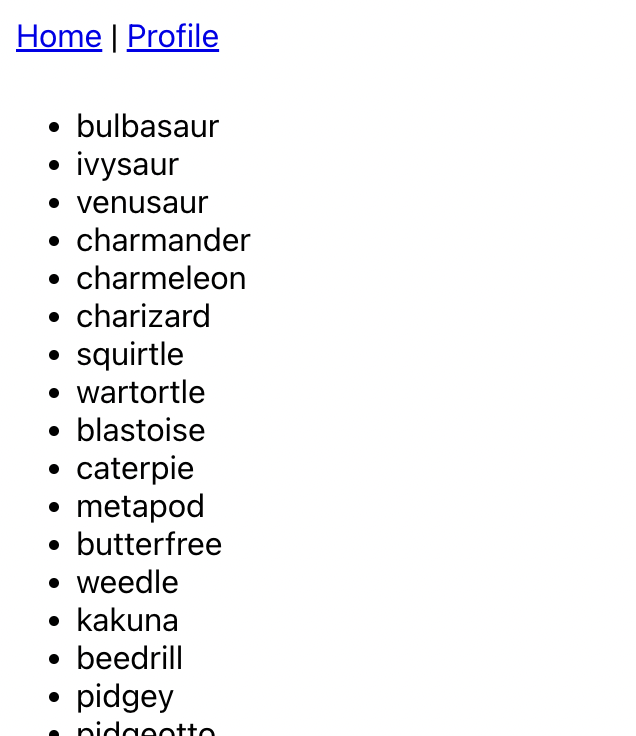Essential React
First Component
Simple React Component
Greeting.tsx
Single-line vs. multi-line JSX
Multi-line JSX should always be wrapped in parentheses.
Enforce it by integrating it with ESLint
Component Splitting
Importing another component
WelcomePage.tsxFragments
Components always return a single node .
If you want to return multiple nodes, wrap them in a Fragment to avoid rendering an unnecessary <div> .
Fragments
Using the long-form
Fragment
is equivalent to the shorter
We will see in a bit in which situation the long-form <Fragment> is useful.
Exercise
-
Setup a new React project with
npx create-react-app name --template typescript - Create a PokeListEntry component to show a pokémon name like 'Bulbasaur' kept in a constant
- Consume this component in the App.tsx
Solution
PokeListEntry.tsx
Solution continued
App.tsx
Props
We can pass data to child components by setting their props (properties)
A prop can have any type, e.g. it can be a JavaScript primitive, an object, or a function
Props can be defined as required or optional
Pass functions as props to listen to events emitted by child components
Define Props on a component
Exercise
- Create Props for your PokeListEntry component expecting an optional name
- Set a default name if property is not passed by consumer
- Use object destruction
Solution
PokeListEntry.tsx
Testing / React Testing Library
Our components can be tested using the React Testing Library
It is already pre-installed when using Create React App.
Testing our dumb component
Greeting.test.tsxTDD - Test Driven Development
It is a good practice to conduct TDD wherever possible
Let us amend the component such that we can set the name through an name property
Add new test case
Greeting.test.tsx
Implement / Make the test green
Greeting.tsxRefactor
Refactor your code such that it is extensible and easy to understand
Cheat Sheet
- getBy* - verify that an element/node is present at this very moment. Throws an error if element/node is not found.
- queryBy* - similar to getBy* , but will not throw an error if the element/node is absent.
- findBy* - verify that an element will be present, e.g. upon completion of an asynchronous API-Call
Exercise
- Test your PokeListEntry component with React Testing Library
- Stretch Goal: Parameterize your test with React Testing Library using it.each(table)(name, fn, timeout)
Solution
PokeListEntry.test.tsx
Solution continued
PokeListEntry.test.tsx
List
To render a list of items, we call the
map
function on an array.
In the callback we map the array item to a JSX element.
We can map to an HTML element or to a custom component.
The JSX element returned from map must have a key prop.
This is a special prop used by React internally to distinguish the elements. It must be unique within the list (e.g. an entity ID).
Use a Fragment to return multiple elements from map .
Here we can't use the shorter <>…</> syntax. Only Fragment can take the key prop.
The children prop
Like HTML elements, React components can be nested:
The parent component receives the child components through the children prop.
The children prop can be rendered in the parent component's JSX.
Exercise
- Create a (hard-coded) array of Pokémon
- Render all Pokémon names in a list (hint: add a new PokeEntry.tsx component)
- Make the name in PokeListEntry.tsx required
- Write tests for the list
- Create a Layout component which wraps the list with a page structure (containing a nav bar with dummy links)

Solution
Solution continued
Solution continued
Solution continued
Recap
We learned…
- How to create a simple React component and import it
- Use props to pass data into a component
- Write tests to verify the components behaviour
- Render a list of components
- Create wrapper components using the children prop